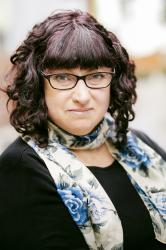Opera Australia: The Marriage of Figaro
Opera Australia’s absolutely splendid The Marriage of Figaro is in Melbourne until the end of November. Premiering in 1786, Mozart’s comic opera about infidelity and forgiveness remains one of his most-loved works.

Figaro and Susanna are servants to the Count and Countess Almaviva. They are getting married, but the Count wants Susanna, the Countesses’s old housekeeper fancies Figaro, a page boy lusts after the Countess, and the gardner’s daughter has her eyes set on the page boy. Over one day, everyone’s hearts are confronted as plans, plots and deceptions are revealed. With undercurrent themes of class, money and status, its tale of love, infidelity, jealous pride, despair, forgiveness, and a bit of cross dressing could be a rom-com hit film with Hugh Grant and Kristen Wiig.
Despite the difficult acoustics of the State Theatre, conductor Anthony Legge creates an exceptional balance between the pit, the stage and Siro Battaglin’s fortepiano that accompanies the recitative. With a light touch, if feels like Mozart’s “too many notes” are heard through fresh ears and the mix especially celebrates Mozart’s love of the sound of human voices and the magic that occurs when they sing together.
And all are glorious voices to hear. Andrew Jones’s Figaro contrasts with the delight of Taryn Fiebig’s Susanna. Shane Lowrencev’s Count is all power and bass, and Jane Ede’s Countess Almaviva silences the room when she sings in despair about her marriage.
Jenni Tiramani’s gorgeous aqua blue, peache and yellow design uses techniques from the 1700s to make the costumes and her set – which reveals its absolute beauty in the final act in the pine grove – takes advantage of the full height of the theatre. David Finn’s magnificent lighting takes full advantage of the set. With a story set in one day, the lighting creates the sense of moving time and changing moods as it opens with morning light that’s hard to believe isn’t from an open window and ends in a gradual fade from dust to darkness and candle light.
With eavesdropping servants and an active chorus who each bring a sense of character, Sir David McVicar’s direction (revived by Andy Morton for Melbourne) lets the singers find a comedic truth and honesty in their characters; although, overall the production feels confined by its form. There are moments of stereotyped character comedy when the chances to trust the honesty, lust or hurt truth of the characters could make the laughs come from a less easy but far stronger place.
It’s a celebration of Mozart and a loving re-creation of The Marriage of Figaro, but there’s nothing on the stage that says why Opera Australia are telling this story. There’s no reflection about us and now. In the 1990s Peter Sellars directed a famous production of this opera (filmed for television) set in Trump Towers in Manhattan. Still sung in Italian, it felt almost obvious to set it in the obscene wealth of the USA at the time. There’s nothing keeping this story in the 1700s. Rich people still think they can control poor people, people still fall in love and lust and lie and beg forgiveness. This is a story that ultimately leaves all of its characters equal, despite money and status and power, so why leave it stuck over 200 years ago in a far away country.




